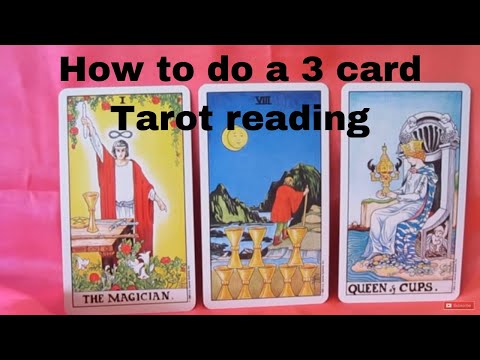### How to Do a 3 Card Tarot Reading: A Mini Lesson
Tarot reading is an ancient practice that involves using cards to gain insight into the past, present, and future, often with a focus on solving problems or answering questions. While there are many ways to conduct a tarot reading, the three-card spread is a simple and effective method suited for both beginners and seasoned readers. This mini lesson will guide you through the steps to perform your own three-card tarot reading.
#### Step 1: Choose Your Tarot Deck
Firstly, select a tarot deck that resonates with you. There are numerous designs available, ranging from the traditional Rider-Waite deck to more contemporary themes. Each deck usually consists of 78 cards, divided into the Major and Minor Arcana. The imagery and symbolism on the cards may vary between decks, so choose one that you feel intuitively drawn to understand.
#### Step 2: Define Your Question
Before shuffling your cards, think about what you want to ask them. It helps if your question is clear and focused. For instance:
– What do I need to know about my current job situation?
– How can I improve my relationship with my partner?
– What should I focus on for my personal growth?
Frame your question in a way that allows for guidance rather than yes/no answers.
#### Step 3: Shuffle the Cards
With your question in mind, shuffle your cards as you normally would. Shuffling not only randomizes the cards but also helps transfer your energy to them which is an integral part of tarot reading.
#### Step 4: Lay Out The Cards
Once you feel ready, cut the deck if desired and lay out three cards in a horizontal row:
1. **Card One (Left): Represents the Past** – This card indicates influences or events in your past that are relevant to your current situation.
2. **Card Two (Center): Represents the Present** – This card reflects your current situation or challenge connected directly to your query.
3. **Card Three (Right): Represents the Future** – This card shows possible outcomes or advice moving forward based on what transpires in the present.
#### Step 5: Interpret Each Card
Begin by looking at each card one by one:
– Observe any symbols or characters.
– Reflect on their meanings or how they make you feel.
– Consider how each card might relate to aspects of your life addressed by your question.
While interpreting each card’s meaning within its position (past, present, or future), also think about how these might connect as part of a broader narrative answer to your question.
#### Step 6: Synthesize The Reading
After examining each individual card:
– Draw connections between them; see how they might tell a story from left to right.
– Think about overarching themes or messages.
This synthesis can help clarify what practical actions or emotional attitudes might be necessary moving forward.
#### Tips for Beginners:
1. **Keep Notes**: Jot down thoughts or insights during readings which can be helpful for reflection later.
2. **Use Resources**: Don’t hesitate to use guidebooks and other resources associated with your tarot deck for interpretations which can be particularly helpful when starting out.
3. **Practice Regularly**: Like any skill, practice improves competence and confidence in readings.
Conclusion:
A three-card tarot reading provides valuable insights quickly and efficiently without overwhelming reader or querent alike making it an ideal spread for daily guidance or understanding specific situations deeper without elaborate setups needed larger spreads demand thus making perfect learning tool anyone starting journey into world Tarot divination!
Porqué el ser humano es tan vulnerable y debemos aceptar nuestras cruces – Tarot de Jesús
